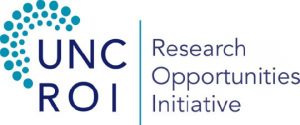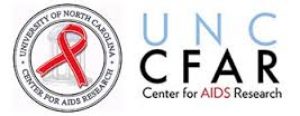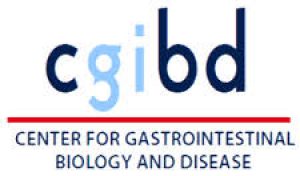Lai Research Group
Lai Research Group
Research in the Lai Lab focuses broadly on infectious diseases at mucosal surfaces, targeted drug delivery and nanoparticle-immune interactions using a variety of tools from biophysics, molecular biology, immunology and engineering.
Please note that we frequently initiate new projects. For an up to date breakdown of ongoing research projects, please contact us.
Mucosal immunology and the mucus barrier
We seek to develop methods to improve protection against infectious diseases at mucosal surfaces. To infect mucosal tissues, such as the lungs, GI tract and female reproductive tract, pathogens must penetrate viscoelastic mucus coatings. We seek to improve our understanding of the interactions between pathogens and mucins, and use this knowledge to develop methods that can better trap pathogens in mucus secretions, which in turn could be readily eliminated via natural mucus clearance mechanisms or other degradative processes, thereby preventing them from infecting cells and tissues in the first place. Two particular areas of interest include harnessing antibody-mucin interactions to crosslink pathogens to mucins as well as tuning the commensal microbial communities.
Antibody response to synthetic nanoparticles
Synthetic polymers are increasingly used in drug delivery and tissue engineering applications. However, how the adaptive immune system can generate antibodies against synthetic polymers remain not well understood. We are currently applying the genetic sequencing and molecular biology techniques to investigate how antibodies can specifically bind to synthetic polymers, the prevalence and ease of induction of such antibodies, and strategies to overcome pre-existing polymer-binding antibodies.
Targeted nanoparticle delivery
Conjugating ligands to nanoparticles for targeted nanoparticle delivery may result in premature elimination from the systemic circulation, thereby limiting the injected dose of particles that can reach target cells/tissues. Furthermore, many disease targets are inherently heterogeneous and not easily targeted by any single ligand. We are investigating ‘pre-targeting’ using bispecific fusion proteins that can crosslink nanoparticles to cells, enabling potentially greater delivery of nanoparticles to more diverse array of cells simultaneously.
Computational modeling
An important theme in our lab is the use of computational modeling to both substantiate our experimental discoveries and guide our experimental efforts to enhance protection against infectious disease or nanoparticle-based drug delivery.
*Co-first author; ‡ Co-corresponding author; § Corresponding author.
Total citations: more than 7500;
H-index: 38
Number of Articles with over 100 citations: 18
Sam Lai’s Google Scholar Listing
- Parker CL, Jacobs TM, Harit D, Lai SK§. (2019) Efficient and highly specific gene transfer using mutated lentiviral vectors redirected with bispecific antibodies. mBio. Submitted.
- Parker CL, McSweeney MD, Lucas AT, Jacobs TM, Wadsworth D, Zamboni WC, Lai SK§. (2019) Pretargeted delivery of PEG-coated drug carriers to breast tumors using multivalent, bispecific antibody against polyethylene glycol and HER2. Nanomedicine. Submitted.
- Xu F, Jay M, Schiller JL, Schroeder HA, Wessler T, Chen A, Forest MG‡, Lai SK‡. (2019) Modeling barrier properties of intestinal mucus reinforced with IgG and secretory IgA against motile bacteria. ACS Infectious Disease. Accepted.
- Hoang T, Toler E, DeLong K, Mafunda N, Bloom S, Sierden H, Moench T, Coleman JS, Hanes J, Kwon D, Lai SK, Cone R, Ensign LM. (2019) Polymicrobial and poorly acidifying vaginal microbiota degrade cervicovaginal mucus barrier to HIV-1. PLoS Pathogens. Submitted.
- Patel KB, Mao ST, Forest MG, Lai SK, Newby JM. (2019) Limited processivity of single motors improves overall transport flux of self-assembled motor-cargo complexes. Physical Review E. Accepted.
- Edwards VL*, Smith SB*, McComb EJ, Tamarelle J, Ma B, Humphrys MS, Gajer P, Gwilliam K, Schaefer AM, Lai SK, Mark KS, Brotman RM, Bavoil P, Forney LJ, Ravel J. (2019) Cervicovaginal microbiota-host interaction modulates Chlamydia trachomatis infection. mBio. Submitted.
- Schroeder HA, Newby J, Schaefer A, Subramani B, Tubbs A, Forest MG, Miao E, Lai SK§. (2019) LPS-binding IgG arrests actively motile Salmonella Typhimurium in gastrointestinal mucus. Mucosal Immunology. Resubmitted.
- McSweeney MD*, Price LSL*, Wessler T, Ciociola EC, Herity LB, Piscitelli JA, DeWalle AC, Harris TN, Chan A, Saw RS, Hu P, Jennette JC, Forest MG, Cao Y, Montgomery SA, Zamboni WC‡, Lai SK‡. (2019) Overcoming anti-PEG antibody mediated accelerated blood clearance of PEGylated therapeutics by preinfusion with high molecular weight free PEG. Journal of Controlled Release. Submitted.
- Schiller JL, Marvin A, McCallen JD, Lai SK§. (2019) Robust antigen-specific tuning of the nanoscale barrier properties of biogels using matrix-associating IgG and IgM antibodies. Acta Biomaterialia. 89:95-103, PMID: 30878451, [Impact 7.4]
- Jensen MA, Wang YY, Lai SK, Forest MG, McKinley SA. (2018) Antibody-mediated immobilization of virions in mucus. Bulletin of Mathematical Biology. 1-27, [Impact 1.8] doi: https://doi.org/10.1101/500538, https://www.biorxiv.org/content/10.1101/500538v2
- McSweeney MD*, Wessler T*, Price LSL, Ciociola EC, Herity LB, Piscitelli JA, Zamboni WC, Forest MG, Cao Y‡, Lai SK‡. (2018) A minimal physiologically based pharmacokinetic model that predicts anti-PEG antibody-mediated clearance of PEGylated drugs in human and mouse. Journal of Controlled Release. 284:171-178, PMID: 29879519 PMCID: PMC6087483 [Impact 7.8]
- Huckaby J, Parker CL, Jacobs T, Schaefer A, Wadsworth D, Nguyen A, Newby J, Lai SK§. (2019) Engineering polymer-binding bispecific antibodies for enhanced pretargeted delivery of nanoparticles to mucus-covered epithelium. Angewandte Chemie. 58(17):5604-5608, PMID: 30811861 [Impact 12.1].
- Newby J, Schaefer AM, Lee P, Forest MG‡, Lai SK‡. (2018) Convolutional neural networks automate detection for tracking of submicron-scale particles in 2D and 3D. PNAS. 115(36): 9026-9031, PMID: 30135100, PMCID: PMC6130393 [Impact 9.7]
- This Week in Machine Learning & AI Podcast (https://twimlai.com/talk/179; 200k listens/mo); WRAL TechWire “UNC-CH launches new company to commercialize particle tracking tech”; ScienceDaily “Better particle tracking software using artificial intelligence”; Phys.org
- Schroeder HA, Nunn KL, Schaefer A, Henry CE, Lam F, Pauly MH, Whaley KJ, Zeitlin L, Humphrys MS, Ravel J, Lai SK§. (2018) Herpes simplex virus binding IgG traps HSV in human cervicovaginal mucus across the menstrual cycle and diverse vaginal microbial composition. Mucosal Immunology. 11:1477–1486, PMID: 29988116, PMCID: PMC6485947 [Impact 7.5]
- Yang B, Schaefer A, Wang YY, McCallen JD, Lee P, Newby J, Arora H, Kumar PA, Zeitlin L, Whaley KJ, McKinley SA, Fischer W, Harit D‡, Lai SK‡. (2018) ZMapp Reinforces the Airway Mucosal Barrier Against Ebola Virus. Journal of Infectious Disease. 218(6):901-910, PMID: 29688496 [Impact 5.2]
- Fix SM, Nyankima AG, McSweeney MD, Tsuruta JK, Lai SK, Dayton PA. (2017) Accelerated clearance of ultrasound contrast agents containing polyethylene glycol (PEG) is associated with the generation of anti-PEG antibodies. Ultrasound in Medicine and Biology. 44(6):1266-1280. PMID: 29602540 [Impact 2.6]
- McSweeney MD, Versfeld ZC, Carpenter DM, Lai SK§. (2017) Physician awareness of immune responses to polyethylene glycol-drug conjugates. Clinical and Translational Science. 11(2):162-165. PMID: 29383836 [Impact 2.0]
- Newby J, Seim I, Lysy M, Ling Y, Huckaby J, Lai SK, Forest G. (2017) Technological strategies to estimate and control diffusive passage times through the airway mucus barrier in mucosal drug delivery. Adv Drug Deliv Rev. 124:64-81, PMID: 29246855 [Impact 15.6]
- Huckaby J, Lai SK§ (2017) PEGylation for enhancing nanoparticle diffusion in mucus. Adv Drug Deliv Rev. 124:125-139, PMID: 28882703 [Impact 15.6]
- Parker CL, Yang Q, Yang B, McCallen JD, Park SI‡, Lai SK‡ (2017) Multivalent interactions between streptavidin-based pretargeting fusion proteins and cell receptors impede efficient internalization of biotinylated nanoparticles. Acta Biomaterialia. 63:181-189, PMID: 28870833 [Impact 6.4] {Cited 2}
- McCallen J*, Prybylski J*, Yang Q, Lai SK§. (2017) Cross-reactivity of anti-PEG antibodies to other polymers containing C-C-O backbone. ACS Biomaterials Science & Engineering. 3(8):1605–1615. [Impact 4.4] {Cited 3}
- Newby J*, Schiller J*, Wessler T, Edelstein J, Forest MG‡, Lai SK‡. (2017) A blueprint for robust crosslinking of mobile species in biogels using third-party molecular anchors with short-lived anchor-matrix bonds. Nature Communications. 8(1):833, PMID: 29018239 PMCID: PMC5635012, [Impact 12.4] {Cited 7}
- Yang Q, Parker CL, Lin Y, Press OW, Park SI‡, Lai SK‡. (2017) Pretargeting with bispecific fusion proteins facilitates delivery of nanoparticles to tumor cells with distinct surface antigens. J Controlled Release 255:73-80. PMID: 28363519 [Impact 7.9] {Cited 4}
- Wang YY*, Harit D*, Subramani DB, Arora H, Kumar P, Lai SK§. (2017) Influenza-binding antibodies immobilise influenza viruses in fresh human airway mucus. European Respiratory Journal 49:1601709. PMID: 28122865 [Impact 12.2] {Cited 9}
- McCallen JD*, Schaefer AM*, Lee P*, Hing L, Lai SK§. (2016) Stereolithography-based 3D printed “pillar plates” that minimizes fluid transfers during enzyme linked immunosorbent assays. Annals of Biomedical Engineering 45(4):982-989. PMID: 27913951 [Impact 3.4] {Cited 2}
- Yang Q, Jacobs TM, McCallen JD, Moore DT, Huckaby JT, Edelstein JN, Lai SK§. (2016) Analysis of pre-existing IgG and IgM antibodies against polyethylene glycol (PEG) in the general population. Analytical Chemistry 88(23):11804-11812. PMID: 27804292 DOI: 10.1021/acs.analchem.6b03437. [Impact 6.0] {Cited 32)
- Lei M, Newby J, Lin C, Zhang L, Xu F, Kim W, Forest MG, Lai SK, Milowsky M, Wobker S, Huang L. (2016) The Binding Site Barrier Elicited by Tumor Associated Fibroblasts Interferes Disposition of Nanoparticles in Stroma-Vessel Type Tumors. ACS Nano 10(10): 9243–9258. PMID: 27666558 [Impact 13.7] {Cited 46}
- Henry C, Wang YY, Yang Q, Hoang T, Hoen T, Ensign L, Nunn KL, Schroeder H, McCallen J, Moench T, Cone R, Roffler S, Lai SK§. (2016) Anti-PEG antibodies alter the mobility and biodistribution of densely PEGylated nanoparticles in mucus. Acta Biomaterialia 43:61-70 PMID: 27424083, [Impact 6.4] {Cited 17}
- Wang YY, Schroeder H, Nunn KL, Woods K, Anderson DJ, Lai SK‡, Cone RA‡. (2016) Diffusion of Immunoglobulin G in shed vaginal epithelial cells and in cell-1 free regions of human cervicovaginal mucus. PLoS ONE. 11(6): e0158338. PMCID: PMC4928780. [Impact 2.8] {Cited 10}
- Wessler T, Chen A, McKinley SA, Cone R, Forest MG‡, Lai SK‡. (2015) Using computational modeling to optimize the design of antibodies that trap viruses in mucus. ACS Infectious Disease. 2(1):82-92 PMCID: PMC4707974 [Impact 4.3] {Cited 14}
- Yang Q*, Parker C*, McCallen J, Lai SK§. (2015) Addressing challenges of heterogeneous tumor treatment using bispecific protein-mediated pretargeted drug delivery. J Controlled Release. 220(Pt B):715-26 PMCID: PMC4688191 [Impact 7.9] {Cited 10}
- Wang YY, Nunn KL, McKinley S, Lai SK§. (2015) Minimizing biases associated with tracking analysis of submicron particles in heterogeneous biological fluids. J Controlled Release. 220(Pt A):37-43. PMCID: PMC4688199 [Impact 7.9] {Cited 11}
- Nunn KL, Wang YY, Harit D, Humphrys M, Ma B, Cone R, Ravel J, Lai SK§. (2015) Enhanced trapping of HIV-1 by human cervicovaginal mucus is associated with Lactobacillus crispatus-dominant microbiota. mBio. 6(5):e01084-1 PMCID: PMC4611035 [Impact: 6.8] {Cited 60}
- Highlighted in Witkin SS, Linhares IM. 2015. mBio 6(5):e01485-15. mBiosphere: “Lactobacilli present in cervicovaginal mucus alter its protective properties” Press Release by American Society for Microbiology, “Vaginal microbes influence whether mucus can trap HIV virus”. Covered by numerous other media outlet, including International Business Times and Slate Magazine.
- Chen A, McKinley SA, Shi F, Wang S, Mucha PJ, Harit D, Forest MG, Lai SK§. (2015) Modeling of Virion Collisions in Cervicovaginal Mucus Reveals Limits on Agglutination as the Protective Mechanism of Secretory Immunoglobulin A. PLoS ONE. 10(7):e0131351 PMCID: PMC4488843 [Impact 3.2] {Cited 6}
- Yang Q, Lai SK§. (2015) Emergence, characteristics and unaddressed questions about anti-PEG immunity. WIREs Nanomedicine & Nanobiotechnology (Invited Review). 7(5):655-77. PMCID: PMC4515207 [Impact 6.4] {Cited 27}
- McKinley SA‡, Chen A, Shi F, Wang S, Mucha P, Forest MG, Lai SK‡. (2014) Modeling neutralization kinetics of HIV-1 by broadly neutralizing monoclonal antibodies in genital secretions coating the cervicovaginal mucosa. PLoS ONE. 9(6):e100598 PMCID: PMC4072659 [Impact 3.2] {Cited 20}
- Chen A, McKinley SA, Shi F, Wang S, Mucha P, Forest MG‡, Lai SK‡. (2014) Transient antibody-mucin interactions produce a dynamic molecular shield against viral invasion. Biophysical Journal. 106(9):2028-2036. PMCID: PMC4017286 [Impact 3.5] {Cited 28}
- Yang Q, Jones SW, Parker C, Zamboni WC, Jear JE, Lai SK§. (2014) Evading immune cell uptake and clearance requires PEG grafting at densities markedly exceeding the minimum for brush conformation. Molecular Pharmaceutics. 11(4):1250-8 PMID: 24521246 [Impact 4.6] {Cited 109}
- Wang YY*, Kannan A*, Nunn KL, Murphy M, Subramani DB, Moench TM, Cone RA, Lai SK§. (2014) IgG in cervicovaginal mucus traps HSV and prevents vaginal Herpes infections. Mucosal Immunology. 7(5):1036-44 PMCID: PMC4122653 [Impact 7.4] {Cited 49}
- Yu T, Chisholm J, Choi WJ, Anonuevo A, Pulicare S, Zhong W, Chen M, Fridley C, Lai SK, Ensign LM, Suk JS, Hanes J. (2016) Mucus‐Penetrating Nanosuspensions for Enhanced Delivery of Poorly Soluble Drugs to Mucosal Surfaces. Advanced Healthcare Materials. 5(21):2745-2750 PMID: 27717163 [Impact 5.6] {Cited 7}
- Ensign LM, Lai SK, Wang YY, Yang M, Mert O, Hanes J, Cone R. (2014) Pretreatment of Human Cervicovaginal Mucus with Pluronic F127 Enhances Nanoparticle Penetration without Compromising Mucus Barrier Properties to Herpes Simplex Virus. Biomacromolecules. 15(12):4403-9 PMCID: PMC4261994 [Impact 5.7] {Cited 16}
- Yang M*, Lai SK*, Yu T*, Wang YY, Happe C, Zhong W, Zhang M, Anonuevo A, Fridley C, Hung A, Fu J, Hanes J. (2014) Nanoparticle penetration of human cervicovaginal mucus: The effect of polyvinyl alcohol. J Control Release. 192:202-8. PMCID: PMC4194208 [Impact 7.9] {Cited 62}
- Yang M, Yu T, Wood J, Wang YY, Tang BC, Zeng Q, Simons BW, Fu J, Chuang CM, Lai SK, Wu TC, Hung CF, Hanes J. (2014) Intraperitoneal delivery of paclitaxel by poly(ether-anhydride) microspheres effectively suppresses tumor growth in a murine metastatic ovarian cancer model. Drug Deliv Transl Res. 4(2):203-209. PMCID: PMC3956079. [Impact 3.4] {Cited 7}
- Suk JS, Kim AJ, Trehan K, Schneider CS, Cebotaru L, Woodward OM, Boylan NJ, Boyle MP, Lai SK, Guggino WB, Hanes J. (2014) Lung gene therapy with highly compacted DNA nanoparticles that overcome the mucus barrier. J Control Release. 178:8-17. PMCID: PMC3951606 [Impact 7.9] {Cited 105}
- Yang M*, Yu T*, Wang YY, Lai SK, Zeng Q, Miao B, Tang BC, Simons BW, Ensign LM, Liu G, Chan KWY, Juang CY, Mert O, Wood J, Fu J, McMahon MT, Wu TC, Hung CF, Hanes J. (2014) Vaginal delivery of paclitaxel via nanoparticles with non-mucoadhesive surfaces suppresses cervical tumor growth. Advanced Healthcare Materials, 3(7):1044-52. PMCID: PMC4059793 [Impact 5.6] {Cited 59}
- Wang YY, Lai SK, Ensign LM, Zhong W, Cone R, Hanes J. (2013) The Microstructure and Bulk Rheology of Human Cervicovaginal Mucus Are Remarkably Resistant to Changes in pH. Biomacromolecules. 14(12):4429-35. PMCID: PMC3918948 [Impact 5.7] {Cited 33}
- Yu T, Wang YY, Yang M, Zhong W, Pulicare S, Choi WJ, Mert O, Fu J, Lai SK, Hanes J. (2012) Biodegradable mucus-penetrating nanoparticles composed of diblock copolymers of polyethylene glycol and poly(lactic-co-glycolic acid). Drug Deliv. Transl. Res. 2 (2), 124-128. PMCID: PMC3818113 [Impact 3.4] {Cited 51}
- Boylan NJ*, Kim AJ*, Suk JS, Adstamongkonkul P, Simons BW, Lai SK, Hanes J. (2012) Enhancement of Airway Gene Transfer by DNA Nanoparticles Using A pH-Responsive Block Copolymers of Polyethylene glycol and Poly-L-lysine. Biomaterials. 33:2361-2371 PMCID: PMC3259202 [Impact 8.8] {Cited 42}
- Kim AJ, Boylan NJ, Suk JS, Lai SK, Hanes J. (2012) Non-degradative Intracellular Trafficking of Highly Compacted Polymeric DNA Nanoparticles. J Control Release. 158(1):102-7. PMCID: PMC3294172 [Impact 7.9] {Cited 33}
- Boylan NJ, Suk JS, Lai SK, Jelinek R, Boyle MP, Cooper MJ, Hanes J. (2012) Highly compacted DNA nanoparticles with low MW PEG coatings: In vitro, ex vivo and in vivo evaluation. J Control Release. 157:72-79. PMCID: PMC3245330 [Impact 7.9] {Cited 61}
- Mert O*, Lai SK*, Ensign L, Yang M, Wang YY, Wood J, Hanes J. (2011) A poly(ethylene glycol)-based surfactant for formulation of drug-loaded mucus penetrating particles. J Control Release. 157(3):455-60. PMCID: PMC3246104 [Impact 7.9] {Cited 69}
- Suk JS, Boylan NJ, Trehan K, Tang BC, Schneider CS, Lin JM, Boyle MP, Zeitlin PL, Lai SK, Cooper MJ, Hanes J. (2011) N-acetylcysteine Enhances Cystic Fibrosis Sputum Penetration and Airway Gene Transfer by Highly Compacted DNA Nanoparticles. Molecular Therapy. 19(11): 1981–1989. PMCID: PMC3222526 [Impact 7.0] {Cited 57}
- Jachak A, Lai SK, Suk JS, Biswal S, Breysse P, Hanes J. (2011) Transport of Metal Oxide Nanoparticles and Single-walled Carbon Nanotubes across Human Mucus. Nanotoxicology. 6(6):614-22. PMCID: PMC4696010 [Impact 5.8] {Cited 36}
- Wang YY, Lai SK, So C, Schneider C, Cone R, Hanes J. (2011) Mucoadhesive nanoparticles may disrupt the protective human mucus barrier by altering its microstructure.. PLoS ONE. 6(6): e21547. PMCID: PMC3126822 [Impact 4.4] {Cited 84}
- Lai SK, Suk JS, Pace A, Wang YY, Yang M, Mert O, Chen J, Kim J, Hanes J. (2011) Drug carrier nanoparticles that penetrate human chronic rhinosinusitis mucus. Biomaterials. 32(26): 6285-6290. PMCID: PMC3130096 [Impact 7.9] {Cited 91}
- Hida K, Lai SK, Suk JS, Won SY, Boyle MP, Hanes J. (2011) Common gene therapy viral vectors do not efficiently penetrate sputum from cystic fibrosis patients. PLoS ONE. 6(5):e19919. PMCID: PMC3103503 [Impact 4.4] {Cited 51}
- Yang M*,Lai SK*, Wang YY, Zhong W, Happe C, Zhang M, Fu J, Hanes J. (2011) Biodegradable Nanoparticles Composed Entirely of Safe Materials that Rapidly Penetrate Human Mucus. Angew Chem Int Ed Engl. 50(11):2597-600. PMCID: PMC3100893 [Impact 12.0] {Cited 164}
Listed by Wiley-VCH in “Hot Topics: Drug Delivery”; “Polymer coat helps nanoparticles penetrate mucus”, Royal Society of Chemistry.
- Suk JS, Lai SK, Boylan NJ, Dawson MR, Boyle MP, Hanes J. (2011) Rapid Transport of Muco-inert Nanoparticles in Cystic Fibrosis Sputum Treated with N-acetyl Cysteine. Nanomedicine (Lond). 6(2):365-75 PMCID: PMC3102009 [Impact 5.0] {Cited 96}
- Lai SK, Wang YY, Hida K, Cone R, Hanes J. (2010) Nanoparticles reveal that human cervicovaginal mucus is riddled with pores larger than viruses. Proc Natl Acad Sci U S A. 107(2):598-603 PMCID: PMC2818964 [Impact 9.7] {Cited 273}
Selected for Faculty of 1000 Biology.
- Tang BT, Dawson M, Lai SK, Wang YY, Suk JS, Yang M, Zeitlin PL, Boyle MP, Fu J, Hanes J. (2009) Biodegradable polymer nanoparticles that rapidly penetrate the human mucus barrier. Proc Natl Acad Sci U S A. 106(46):19268-73. PMCID: PMC2780804 [Impact 9.7] {Cited 345}
In this issue, “Mucus is no match for coated nanoparticles”, PNAS; “Biodegradable Particles Can Bypass Mucus, Release Drugs Over Time”, Science Daily; selected for Faculty of 1000 Biology.
- Lai SK*, Hida K*, Shukair S, Wang YY, Cone R, Hope TJ, Hanes J. (2009) Human immunodeficiency virus type 1 is trapped by acidic but not by neutralized human cervicovaginal mucus. J Virology. 83:11196-11200. PMCID: PMC2772788 [Impact 5.8] {Cited 223}
- Suk JS*, Lai SK*, Wang YY, Boyle MP, Hanes J (2009). The Penetration of Fresh Undiluted Sputum Expectorated by Cystic Fibrosis Patients by Non-adhesive Polymer Nanoparticles. Biomaterials. 30(13):2591-2597. PMCID: PMC2661768 [Impact 8.8] {Cited 224}
- Lai SK*, Wang YY*, Cone R, Wirtz D, Hanes J (2009). Altering mucus rheology to “solidify” human mucus at the nanoscale. PLoS ONE. 4(1): e4294. PMCID: PMC2627937 [Impact 4.4] {Cited 115}
“A Better Mesh: Researchers ‘Tighten’ Body’s Protective Coating”, Science Daily; featured in over 10 other science/medical news outlets.
- Lai SK‡, Wang YY, Hanes J‡. (2009) Mucus-penetrating nanoparticles for drug and gene delivery to mucosal tissues. Adv Drug Deliv Rev. 61(2):158-171. PMCID: PMC2667119 [Impact 15.6] {Cited 1111}
Featured on the Cover
- Lai SK, Wang YY, Wirtz D, Hanes J. (2009) Micro- and macrorheology of mucus. Adv Drug Deliv Rev. 61(2):86-100. PMCID: PMC2736374 [Impact 15.6] {Cited 620}
- Wang YY*, Lai SK*, Suk JS, Pace A, Cone R, Hanes J. (2008) Addressing the PEG Muco-adhesivity Paradox to Engineer Nanoparticles that “Slip” through the Human Mucus Barrier.
Angew Chem Int Ed Engl. 47(50):9726-9729. PMCID: PMC2666733 [Impact 12.0] {Cited 384}
News & Views: “Drug delivery: Stealth particles give mucus the slip”, Nature Materials (2009) 8: 11 – 13; News Blog: “Breaking the mucus barrier”, The Scientist (2008); also featured in over 20 other science/medical news outlets.
- Lai SK, Hida K, Chen C, Hanes J. (2008) Characterization of the intracellular dynamics of a non-degradative pathway accessed by polymer nanoparticles. J Control Release. 125(2):107-111. PMCID: PMC2220013 [Impact 7.9] {Cited 79}
- Lai SK, Hida K, Man ST, Chen C, Machamer C, Schroer TA, Hanes J. (2007) Privileged delivery of polymer nanoparticles to the perinuclear region of live cells via a non-clathrin, non-degradative pathway. Biomaterials. 28(18): 2876-2884. PMID: 17363053 [Impact 8.8] {Cited 261}
Editor’s choice, Drug Discovery Today (2007).
- Lai SK, O’Hanlon ED, Harrold S, Man ST, Wang YY, Cone R, Hanes J. (2007) Rapid transport of large polymeric nanoparticles in fresh undiluted human mucus. Proc Natl Acad Sci U S A. 104(5):1482-1487. PMCID: PMC1785284 [Impact 9.7] {Cited 778}
Research highlights include: “Nanoparticles: Against the flow”, Nature Nanotechnology (2007); “Nanoparticles and mucus”, Journal of American Medical Association (2007) 297(9):941; “Coated Nanoparticles Solve Sticky Drug-Delivery Problem”, National Cancer Institute, Alliance for Nanotechnology in Cancer Newsletter.
- Suk JS, Suh J, Lai SK, Hanes J. (2007) Quantifying the intracellular transport of viral and nonviral gene vectors in primary neurons. Exp Biol Med (Maywood). 232(3): 461-9. PMID: 17327481 [Impact 2.4] {Cited 76}
Society of Experimental Biology & Medicine Best Paper Award for 2007, Basic Biology Section.
- Castellanos M, Kushiro K, Lai SK, Shuler ML. (2007) A genomically/chemically complete module for synthesis of lipid membrane in a minimal cell. Biotechnol Bioeng. 97(2):397-409. PMID: 17149771 [Impact 3.3] {Cited 19}
- Suh J, Choy KL, Lai SK, Suk JS, Tang B, Prabhu S, Hanes J. (2007) PEGylation of nanoparticles improves their cytoplasmic transport. Int J Nanomedicine. 2(4):735-41. PMCID: PMC2676827. [Impact 5.0] {Cited 129}
- Suk JS, Suh J, Choy K, Lai SK, Fu J, and Hanes J. (2006) Gene delivery to differentiated neurotypic cells with RGD and HIV Tat peptide functionalized polymeric nanoparticles. Biomaterials. 27(29):5143-5150. PMID: 16769110 [Impact 8.8] {Cited 155}
Listed in 2006 by Science Direct as a “Top 25 Hottest Article” in the area of Biomaterials (based on times downloaded).
- Lai SK, Batra A, Cohen C. (2005) Characterization of polydimethylsiloxane elastomer degradation via cross-linker hydrolysis. Polymer. 46: 4204-4211. [Impact 1.5] {Cited 25}
- Yang Q, Lai SK. (2016) Engineering well-characterized PEG-coated nanoparticles for elucidating biological barriers to drug delivery. In Cancer Nanotechnology, Methods and Protocols, R Zeineldin (Ed.) Springer. (Methods Mol Biol.) Invited contribution.
- Kim MS, Lai SK. (2011) Mucosal Barriers to Drug- and Gene- Loaded Nanoparticles. In Mass Transport and Biological Barriers to Nanotherapuetics (Chapter 8). R Serda (Ed.) Pan Stanford Publishing, Singapore.
- Lai SK, Hanes J. (2007) Real time multiple particle tracking of gene nanocarriers in complex biological environments. In Gene Therapy Protocol, J Ledoux (Ed.), 3rd Ed. The Humana Press, Totowa. (Methods Mol Biol. 2008;434:81-97.) {Cited 11}
What’s Snot to Like? – A middle school lesson plan that explores the respiratory and immune systems through mucus. Principal Developers: Nicholas Hoffmann, Amber Vogel. Additional Contributors: Crystal Harden Adams, Samuel K. Lai, Cathy P. Oakes.
What’s Snot to Like? was developed by Morehead Planetarium and Science Center’s DREAMS Initiative with support from the National Science Foundation CAREER Award to Dr. Samuel Lai (Fed. Grant DMR-1151477), and support from the State of North Carolina to Morehead Planetarium and Science Center.
Supplementary Videos
External Foundations and Agencies



UNC Intramural Support





Alex Chen
Jasmine Edelstein
Justin Huckaby
Timothy M. Jacobs
Arthi Kannan
Morgan McSweeney
Mike Murphy
Jay Newby
Christina Parker
Jennifer Schiller
Holly Schroeder
Bhawana Shrestha
Mohammed Shukoor
Durai B. Subramani
Anne Marie Talkington
Ying-Ying Wang
Angela Yang
Feifei Zhu
We are currently recruiting for two (2) research technicians.
We are interested in recruiting highly motivated people to join our lab at all levels (postdoctoral fellows, graduate and undergraduate students).
For postdoctoral fellows, preference will be given to those who have a strong background in (1) molecular biology (in particular protein engineering), (2) immunology, or (3) virology. However, we welcome highly creative researchers from all disciplines who are interested in joining a highly dynamic and interdisciplinary group. Competitive candidates are expected to be fully fluent in English, have experience with microscopy, and have a strong record of publications in well-respected journals.
Candidates should send a cover letter and CV to Sam Lai (lai@unc.edu).








